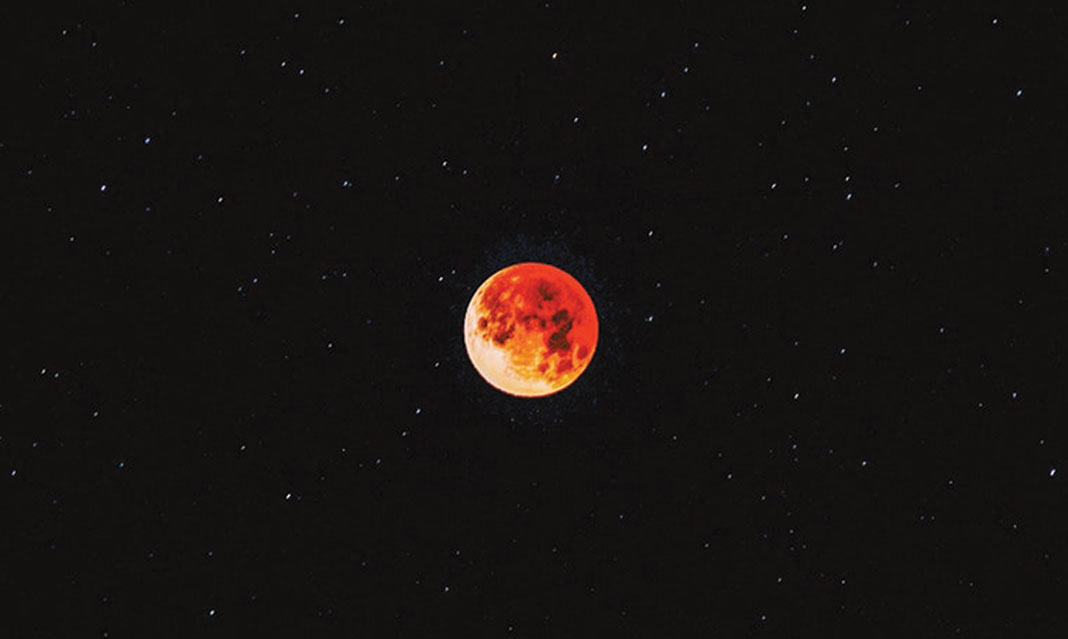On the clear night of Monday January 21st, people were able to spot the Super Blood Wolf Moon eclipse lingering in the night sky. Noted by CNN as one of “the first sky watching events of 2019,” this rare occasion captured the attention of many communities around the world.
A lunar eclipse may occur as often as every nine months and depending on the earth’s position, some people have a chance to see it in the sky and others do not as it is only visible during nighttime. For half the earth, the Super Blood Wolf Moon eclipse was visible in the night sky, while for the other half of the Earth, the lunar eclipse was not visible.
This total lunar eclipse, garnered quite a bit of attention as it is not just the first full moon of the year in January, but also appeared larger to us on earth and turned copper in colour. Unlike a typical full moon known as “Lunar Apogee,” the super moon, also called “Lunar Perigee,” is about 12 per cent larger in terms of how big it appears in the sky. When all of these characteristics are put together, the rare sight generates its fancy name: “Wolf” corresponds with January, “Super moon” indicates the size of the moon, and “Blood moon” represents the coppery, reddish colour.
John Lester, a professor of Astronomy and Earth and Space Science from UTM’s Department of Chemical and Physical Sciences, provided insight about the occurrence of the Super Blood Wolf Moon eclipse. Lester notes, “The Wolf part is non-astronomical. It’s for the first full moon of the year. So that part is not very significant. The Super Moon was because the moon looks bigger when its closer to us and so we call it, ‘Super.’”
The Super Blood Wolf Moon eclipse lasted for roughly one hour on Monday. By approximately 11:41 p.m. the moon began passing behind the Earth, and it reddened in colour until it reached mid-eclipse (when the moon is directly behind the Earth and at its reddest) by 12:12 a.m. By 12:44 a.m., the total eclipse ended as the moon finished passing behind the Earth, until the partial eclipse ended at 1:51 a.m. “The eclipse didn’t last that long as it wasn’t passing behind the middle of the Earth but towards the top,” explains Lester.
Blood Moons are typically red or coppery in colour because when the moon is directly by the Earth, blue light gets scattered by the Earth’s atmosphere while the red light passes through the atmosphere and onto the moon. This is why the moon appears red to us. The more the moon is enveloped by the Earth’s shadow and the more red light falls onto the moon, the more the moon appears red.
“The ‘Blood’ part of the title is because during a lunar eclipse, when the moon goes into the shadow of the Earth, it doesn’t go black,” emphasizes Lester, “because the Sun’s light is focused in there by the Earth’s atmosphere. The Earth’s atmosphere also makes the light redder because it scatters away the blue light. So, when we see the eclipse of the moon, it has this dark red colour, so they attached the word ‘Blood’ to it.”
The blood-like colour of the moon can appear more prominent based on several factors relating to the condition of one’s local atmosphere. One important factor that affects the redness of the moon during a lunar eclipse, making it appear more copper in colour than red, is how dusty the local atmosphere is at the time.
Unfortunately, for those that missed their chance of catching a look at the Super Blood Wolf Moon eclipse in the night sky, the next total eclipse supposedly will not occur in North America until 2022.Until then, those that still want to look at the Super Blood Wolf Moon eclipse can enjoy the rare phenomena through the several photos taken and posted online.



